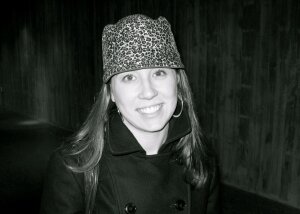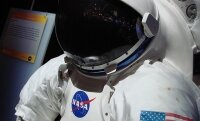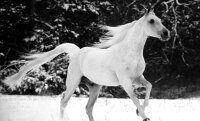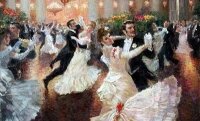Interviewed by Tracy Youngblom, December 28th, 2010
 1. Your poem has an historical feel to it, as if it could be about “real” people and incidents. Can you comment on that relationship between poetry and “ real life”?
1. Your poem has an historical feel to it, as if it could be about “real” people and incidents. Can you comment on that relationship between poetry and “ real life”?
As reader, I’m not very interested in distinguishing between art and “real life,” or uncovering how “real life” informs a piece of writing. “Reality,” or what we define as real, is still necessarily a kind construction.
Good art, good writing, can create its own life, one that is just as real. I think the job of poetry is to locate and unravel truth, to question and change the very nature of reality and how we understand it. As a poet, I want to work on poetry that is first concerned with this truth, and I hope that in some way, regardless of any connection to “real life,” it always feels real and relevant.
Much of my work begins with some grain, some moment from my experience in the world, and that grain, I hope, becomes something more over the course of the poem. In “Map of Heesakker Park,” I began with a concrete place, a park in Wisconsin, which at one time was the homestead of my great-grandparents and where my grandfather grew up. I’m interested in the physicality of memory and its relationship to place, so the poem unfolded its own reality from there.
2. The tone of your poem is established through anaphora, the repetition of the phrase “this is where,” and then the variation of that phrase at the end. Can you comment on your use of this formal technique? Was it your intention from the beginning, or did the form emerge as you wrote?
I started out thinking about walking someone through this park, and imagining how one might point out specific landmarks, even those now absent from the landscape. It seemed to me this experience would feel like giving a tour, and tours always seem to have an element of repetition. This is where such-and-such, and over here, this is where such-and-such. I began with the beginning of the tour, and the repetition seemed to fall into place. During the writing process, I liked the way the anaphora allowed for a certain control over the pacing of the poem, and it seems to facilitate, for this particular piece, a kind of building intensity.
3. Your poem is also, obviously, about memory, how it works, what it costs. Can you talk about the place of memory in your work, in poetry in general?
Memory is such an important part of the human experience, in how we locate selfhood, how we define relationships, how we see the world. If poetry is a way to better understand the human condition, and I think it has to be, it must also consider memory in its many forms and iterations.
In my work, concerns with memory are nearly always present and rarely resolved—time, history, and experience are all temporary, but they make us who we are in any given moment or who we are not. Loss is a compulsory companion to memory, and the tension between the two is where poetry happens.
4. Finally, can you name some poets or teachers who have influenced your work? It’s always interesting to think about influences.
For this poem, Elizabeth Bishop’s work has been an important influence, poems like “Visits to St. Elizabeth’s”. I’m also a big Calvino fan, and Six Memos for a New Millennium is something that has greatly shaped how I think about poetry and what I want my writing to do. Calvino writes about achieving the “exact and meticulous attention to the composition of each image, to the minute definition of details…all in order to attain the desired degree of vagueness… [to] grasp the subtlest sensations with eyes and ears and quick unerring hands.” Somewhere in there, I think, is where we can find the real real life.
I should also mention Mr. Hutchinson, my glamorous and mysterious seventh grade teacher, who had his students write the beginnings of personal essays, the first paragraph, with as little time and as much intensity as possible. Then, we’d pass them desk-to-desk, with each student reading everyone else’s writing, and Mr. Hutchinson commenting on the writing that most moved him. It was a space where I felt like a writer, or at least was able to imagine what being a writer could look and feel like, and it began my interest and investment in efficient, authentic, emotionally resonant language.
Map of Heesakker Park and Woods, Little Chute, Wisconsin
This is where the boy came back,
in his garrison cap and crutches.
This is where, with two hands
and the one leg that was left,
he learned to climb the silo
again, as his brother winched
down the basketball hoop
with the claw of a hammer
and the blunt end of an axe
for good measure. This is where
the brother wedged the blade
into packed clay, as if he could pry
the world open like an oak tree,
touch the fibrous heart
and each drought, each thing
gone missing and yellow, each return.This is where the mother thrashed
the kitchen rug with a birch branch
until everything bled, the red and dust
and sap flung like seeds into the garden.
This is where the screen door
wouldn’t hold its latch. Where the cows
didn’t remember he had left.
Where memory is a sign and a plaque
and a parking space. Where memory
is an oak leaf in early November,
its thread about to tear. Where
the limbs mark the watch, and wait.
“Map of Heesakker Park and Woods, Little Chute, Wisconsin” originally featured in Volume 16 of Emprise Review.







